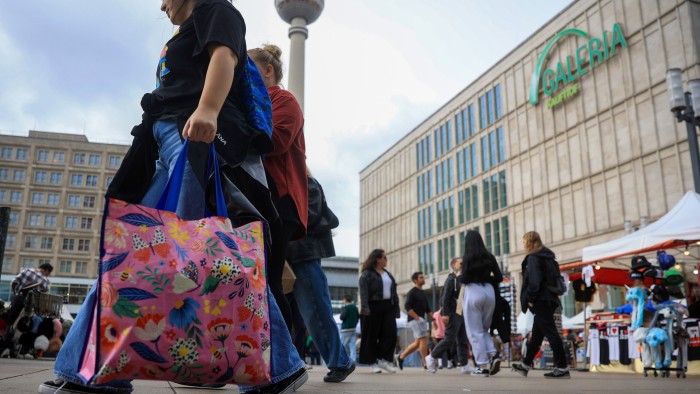Stay informed with free updates
Simply sign up to the Eurozone economy myFT Digest — delivered directly to your inbox.
Eurozone economic activity has all but stagnated, while some measures of inflation are now back to levels last seen almost two years ago, a closely watched survey of purchasing managers has shown.
A flash reading of HCOB’s Purchasing Managers’ index, compiled by S&P Global, was flat at 50.2 points in February.
While the reading remains above the crucial threshold of 50 that marks the difference between expansion and contraction in activity, it was weaker than the 50.5 estimate of economists polled by Reuters.
A measure of inflation for businesses’ input costs, meanwhile, is now higher than at any point since April 2023 — potentially complicating the European Central Bank’s attempts to counter weak growth by cutting interest rates.
The ECB is widely expected to make another quarter-point cut to borrowing costs in early March, but some on its rate-setting governing council are now warning of the threat of higher inflation.
Input costs have risen every month since October.
“With just two weeks to go before the ECB meeting, the price front is sending bad news,” said Cyrus de la Rubia, chief economist at HCOB, adding that the PMIs showed that service price inflation was “definitely” not under control while economic output in the Eurozone “is barely moving at all”.
The index swung into expansionary territory for the fist time in five months in January. But new orders continue to fall, suggesting more weakness in the months ahead.
While the region had overcome the “winter dip”, there was “no summer heat in sight”, said Commerzbank economist Vincent Stamer.
Christophe Boucher, chief investment officer at ABN AMRO Investment Solutions, said the uptick in price pressures was his “main concern”, adding that the trend “aligns” with the hawkish views of ECB executive board member Isabel Schnabel.
In an interview with the Financial Times, Schnabel argued this week that policymakers should “now” start to debate a “pause or halt” to rate cuts as price risks were “skewed to the upside” while borrowing costs had eased a lot.
S&P Global said companies again cut staff “amid muted demand”.
Manufacturing production dropped for the 23rd month in a row.
Germany, the bloc’s largest economy, eked out some growth ahead of Sunday’s elections, which take place amid two years of economic stagnation. France, meanwhile, was hit by a “marked and accelerated” fall in activity.
In the rest of the currency area, the “solid” expansion remained on track.
Read the full article here




